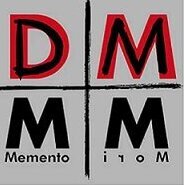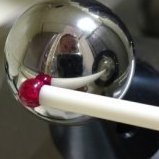Leaderboard
Popular Content
Showing content with the highest reputation on 06/30/2022 in all areas
-
go the the online Carmex threading wizard Carmex Tool Wizard - Welcome work your way through it selecting the correct material and a thread mill from the "HARDCUT" line keep working through the wizard and use it to post gcode... that will show you what your code should look like you should be getting a G04 , a G42 CDC callout and a top down toolpath when using these cutters I lie to Mastercam and define the cutter as a single point tool so that I get a single toolpath from top to bottom These cutters have 3 teeth and doing that gives you one finish pass and 2 spring passes all in one pass. If you can, run the tool 3 teeth deeper than your depth callout.. as the leading teeth break down, the next two are still making good spring passes and your thread will gage properly to the required depth You get a safe repeatable toolpath that makes good threads for a long time.2 points
-
Just for future reference, I cut both right and left hand threads in Ti and 17-4 H900 with standard right hand threadmills. Just need a slow entry feed if you're entering at the bottom. Also, three passes with approximately equal material cross-section, plus a skim pass.2 points
-
Accuracy is really the key here. Can be spline or an arc just has to be consistent and accurate to each other is all. Don't forget the pins that have to be made and if I wasn't clear I would make sure everything is accurate like +/-.0002. Not sure what your shop rate is and what machines you have, but thinking that is a cheap price for the quality you're getting.2 points
-
2 points
-
1 point
-
Did, thanks. Turns out it was a .NET Framework Cumulative Update issue that affected both of our PCs at the same time. Our IT staff handles all of that exclusively and as they're not on-site it didn't work correctly, causing some kind of issue that's beyond me. Phew...glad it wasn't anything I did. Thanks again, CM.1 point
-
Not a problem and experience is one of the best ways to understand things.1 point
-
That ability was removed with the last forum update. The laws have changed in Canada and In-House can be fined or have people jailed if certain things are allowed on their website. To play it safe they had to disable that ability.1 point
-
It think Matt was being sarcastic. Sorry to laugh, but thought it was funny.1 point
-
Nope, not crazy at all...after looking at the part you modeled....something doesn't add up for sure.1 point
-
For the Hybrid System itself, we're happy to send you a quote. Same for the M450 system. **** NOTE: I had to redact the pricing, as that really shouldn't be posted publicly. **** I would have to ask Brian what the cost is for the M450, so give me a few to get you an answer. We can do Steel, Stainless (316L), Inconel 718, and Titanium. I believe we've done some Copper as well. I'm sure if you can get welding wire in a particular material, we can help you figure out how to print it. I can tell everyone that we're by far the most economical solution available, and at the lower end of your range, not the upper...1 point
-
Yeah, the devil is in the details. Do you need .0005" true position from one end to the other?1 point
-
1 point
-
After download just right-click and run as administrator https://spaces.hightail.com/receive/BpF63w0ZYK This has fixed the crashing issue for me. Credit to GBouman for the fix1 point
-
Hi DC, I came across this post today while trying to figure out the same thing on my Lynx 2100 LSYB. I was able to look through our factory parameters list (the hard copy booklet that shipped with the machine), and found that the keep relay associated with DSSV just needed to be switched on (it was off, or 0, by default from the factory, not sure why!). The keep relay on our machine was K25.1; that is, keep relay 25, bit 1. Changed this from 0 to 1, and the M516 code works as it should now! After playing around with it a bit, I also noted that it is essential to command a G50 Sxxxx at the tool change or tool path before M516 is commanded, where Sxxxx is your maximum spindle speed for that spindle. For example, our main spindle max RPM is 4500, but I had previously had this particular tool path commanded with a G50 S3500 for a facing path, and didn't want to exceed 3500 RPM. However, this was limiting the M516 function for some reason. I added a G50 S4500 before the tool path where we command M516, and it works as it should. Hope this helps, I feel like I unlocked a secret cheat code on our machine!1 point
-
The other issue you will find, is that used machinery holds good resale value. There isn't much difference between new/used equipment, unless you go really old, and then you will have issues with finding parts and someone to repair the machine when it goes down. And, it will go down. I have lost count of the number of people I've helped over the years, and friends I've known, who go down the used machine route, and spend all their time trying to keep the machine running. At the end of the day, used machines are slow, so you're going to find really quickly that it takes 3-5 times as long to make a part with old machinery, versus a new machine. Who are you going to get to train you on an old machine? Who are you going to get to setup, program, and specify all the tooling you will need to make these parts? If you opt for a new machine, you can bundle the whole machine, and all of the tooling, fixturing, programming, and training, into a single monthly bill, and have someone come in, program everything, do all the hard work of developing the whole process, and end up with a machine that cuts your parts, quickly and accurately, which essentially becomes a printing press for dollar bills, when done right. If you are a talented machinist, who knows machines and controls inside-and-out, and you've programmed, setup, and ran dozens of parts, then sure, go ahead and buy a used machine, scrape together the tooling, and write the G-Code program by any means necessary, just to get something going. Do you want to be in the machine shop business? From what I'm hearing you say, your end goal is just to source parts cheaply and quickly, without having to deal with an overseas supply chain. If that is the case, I'm 100% positive you can find a machine shop here in the United States of America, who can produce these parts with the speed and economy you desire. The won't be "as cheap as doing it yourself", but I don't think you really understand all the things you need to successfully run a machine shop which cuts metal. You don't just buy a used machine, plug it in, and "presto", out comes your parts. I'm not trying to come off as condescending here. Just speaking from the heart, and from decades of hard-won experience, seeing people get into the industry without ever having worked in the industry. If you are still undeterred, and want to make your own parts, then welcome to the brotherhood of manufacturing professionals, and I wish you the best of luck in the pursuit of your dreams. By the way, full disclosure, I work for a Machine Tool Distributor, who happens to sell the most economical brand of machines on the planet (and the largest MTB also); Haas Automation. Where are you located? I'd be happy to pass along your information to someone who can truly help. No hard sell, ever, just someone who can provide another perspective and offer options. This part would fit great on a Haas ST-40 Lathe, with Y-Axis, Bar Feeder, and a Parts Catcher. You could 100% automate the process with minimal operator interaction, to simply load bar material, and remove finished parts from the Parts Catcher when complete. This could be done turnkey, so you can get up and running very quickly, and still have the flexibility to either program new parts yourself, or contract someone to program, setup, and prove-out your new parts. That part is 100% achievable on a Y-Axis Lathe, including the Broaching...1 point
-
We found the trigger for this- it's logged as R-31531 and the team is looking into it.1 point
-
If Jamie works for CIMCO too, his current team is going to be quite shocked. ;) The CIMCO arc creation issue should be sent in to CIMCO for investigation. The red line issue- that's all Jamie. (and me)1 point
-
I've been investigating what makes the red hole axis lines display for a few days now. I have seen it but can't reliably reproduce it. If you know of a process that gets them to show I'd but happy to hear it. They are supposed to be blanked and are necessary for the toolpath, I just can't figure out what is causing them to display. Once I figure out the steps I can get the issue logged for the development team to take a look at. You can post it here or email [email protected] and I'll get it. Thanks.1 point
-
0 points
-
Dude, it's a Bow frame.... If everything is relatively flat and true I would Assume ±.02 would be fine lol. But then again I don't machine archery products....0 points
-
0 points
Join us!
eMastercam - your online source for all things Mastercam.
Together, we are the strongest Mastercam community on the web with over 56,000 members, and our online store offers a wide selection of training materials for all applications and skill levels.













